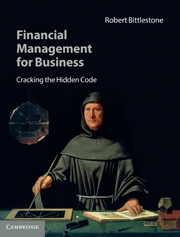Appendix 2 - Getting to grips with cash
Published online by Cambridge University Press: 05 June 2014
Summary
Companies hit the skids for all sorts of reasons, but it's one thing that ultimately kills them: They run out of cash. Yet most managers are too preoccupied with measures like Ebitda (earnings before interest, taxes, debt, and amortization) and return on assets to give cash much notice. Boards don't ask for it. Analysts don't analyze it. Corporate financial statements do typically include a statement of cash flow, but it's a crude snapshot that excludes off-balance-sheet items and doesn't show where the cash comes from. The solution is a detailed, easily readable cash-flow report. Give it to the board. Give it to employees. Break out cash flow by division, letting people track the company's blood flow themselves. Warren Buffett pays close attention to cash flow because, among other reasons, he knows cash is hard to fudge. That's why creative accountants hate it – and why you should learn to love it.
Ram Charan and Jerry UseemThis book has focused on education rather than implementation, but it may perhaps be appropriate to end with a note about some practical ways of increasing the visibility of cash flow within your own business.
There are two well-established but quite different ways of presenting cash flow information in today's companies: the Direct approach (left) and the Indirect approach (right). These are depicted in Figure A2.1 on which I have also drawn a dashed line. Below this line you can see that the schedules are identical: the difference occurs only above the line.
- Type
- Chapter
- Information
- Financial Management for BusinessCracking the Hidden Code, pp. 189 - 194Publisher: Cambridge University PressPrint publication year: 2010



